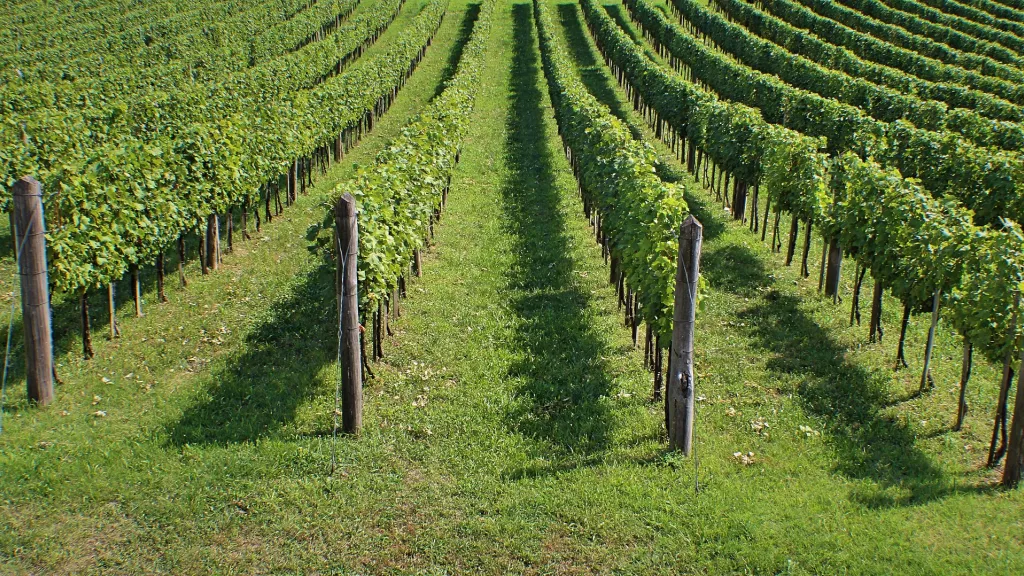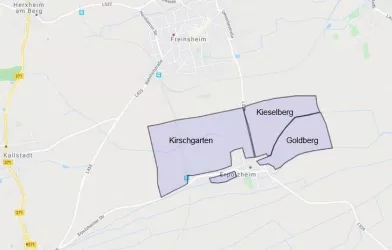Kirschgarten, Kieselberg & Goldberg
Kirschgarten
The name "Kirschgarten" (cherry orchard) can be traced back to the ownership of a plot of land by the nuns of the Kirschgarten Convent in Worms (around 13th century).
Soil type: loamy sand
Kieselberg
The name is derived from the predominant soil type. It refers to the soil composition: coarse-grained, stony and loamy sands, in places also limestone weathered soils. Gravel-rich, loamy sandy soil has the capacity to store soil water available to plants and allows good aeration of the roots. The gravel content ensures that the soil warms well. An ideal place for the vines to thrive and the prerequisite for the maturation of a delicious wine.
Soil type: loamy sands, often gravelly
Goldberg
In principle, the interpretation of gold names is difficult, as they can be based on different naming motives. Actual gold deposits are very rare. Treasure finds, the yellowish colour of the soil or the mica material contained in the soil, so-called fool's gold, may have given the area its name. Both particularly productive cultivated land and soils of low quality (derisive name) can bear a gold name.
Soil type: sandy loam, loamy sand, often interspersed with boulders.

